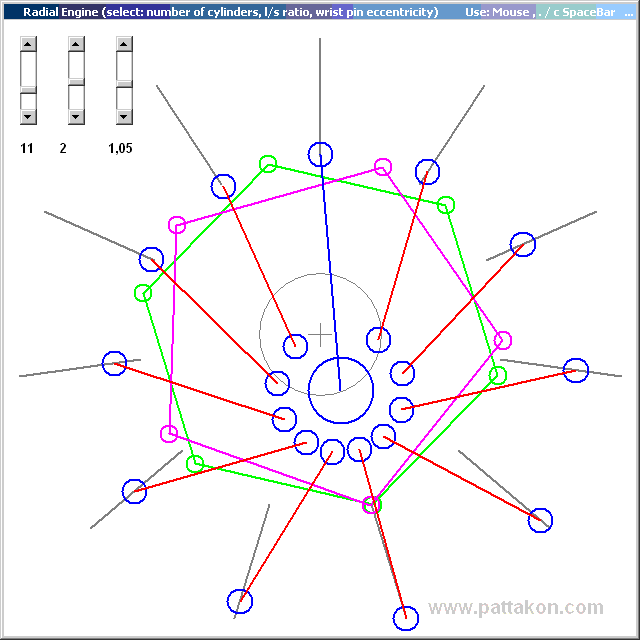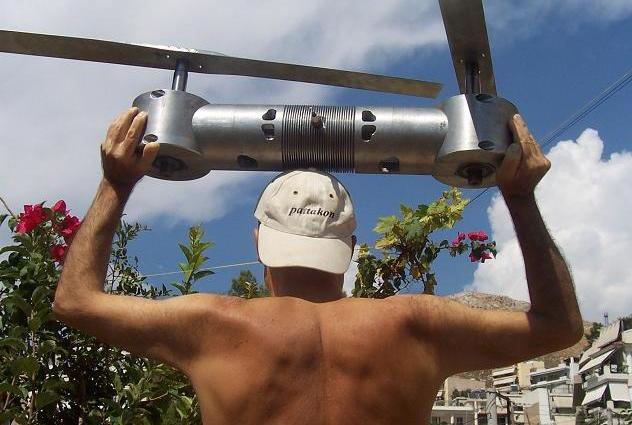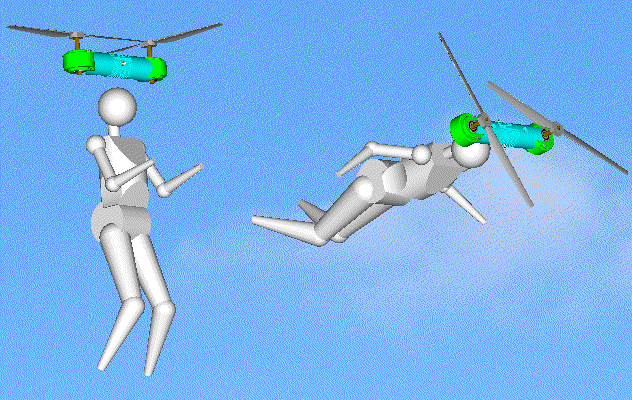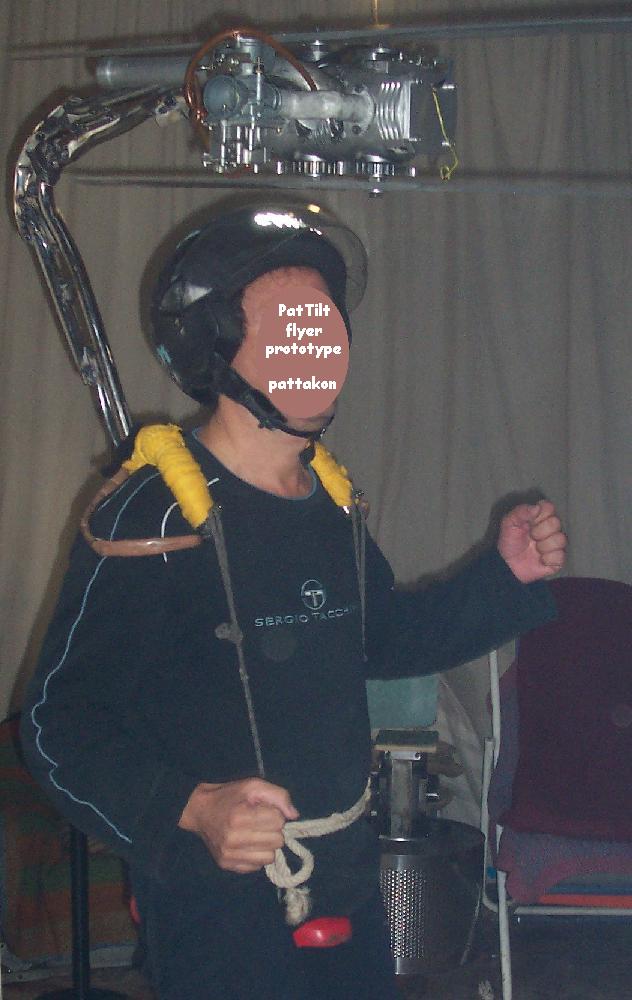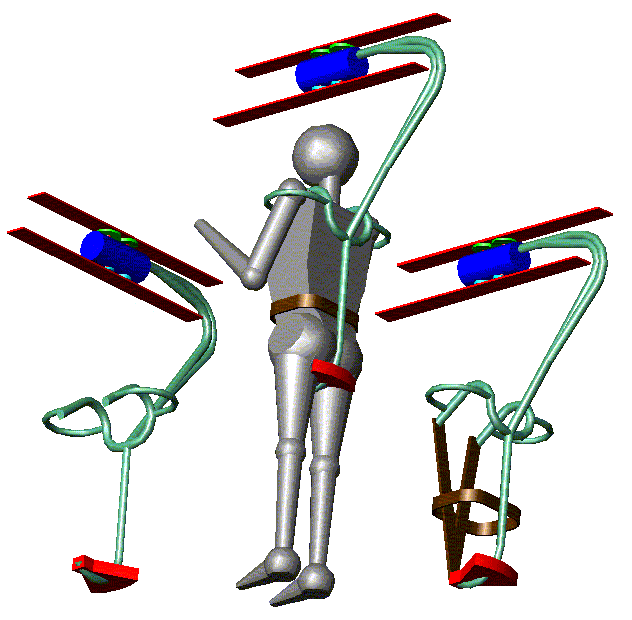Hello Kelpiecross.
For the wide-Vee propellers of the OPRE Portable Flyer:
They seem like those of the Kaman (or of the Frettner) helicopters:

but they are quite different.
Think about the gyroscopic rigidity and about the controlability in case of a Portable Flyer.
The set of the two wide-Vee propellers of the OPRE Flyer provides zero gyroscopic rigidity, while in the arrangement of the Fretner / Kaman the gyroscopic rigidity of the set of the two counter-rotating - but not parallel - propellers cannot be eliminated.
The wide-Vee propellers have to be made of lightweight and strong material, like the Carbon Fibres.
Think that the lift force and the centrifugal force that act on the blades of a conventional propeller try to deform it to a wide-vee:

In the above photo the blades move on a wide cone, not on a plane.
Without the lift forces on the blades, the centrifugal forces would make the blades to move on a plane.
I think you will enjoy the youtube video
https://m.youtube.co...h?v=E81KQ7u3-7s 
The (water) Flying Board (shown in my last post), the JetPack of the above video and the pattakon Portable Flyers have some common characteristics:
they are rid of vibrations,
they are rid of the need for providing some “reaction torque”,
their gyroscopic rigidity is eliminated,
they are based on a force that can "instantly" and effortlessly be vectored towards the desirable direction,
they are based on a pure manual control wherein the eyes, the brain and the body of the rider are the sensing and controlling mechanisms.
Quote from the Internet for the JetPack (or Bell Rocket Belt):
“The pack with its fuel weighed 125 lb (57 kg).”
“On 17 February 1961, the pack veered sharply, reaching the end of the safety tether, which then broke, causing the Moore (remark: he is the inventor of the JetPack) to fall approximately 2.5 meters, breaking his kneecap. He could no longer fly. Engineer Harold Graham took over as test pilot and testing resumed on 1 March. He then carried out 36 more tethered tests which enabled them to achieve stable control of the pack”
“On June 8, 1961, Harold Graham demonstrated Bell's "portable Army rocket" for the first time to an incredulous public. The flight saw Graham fly over a truck at a height of 15 feet landing 150 feet away after 14 seconds of air time. Nevertheless, the "ear-splitting" flight was described by the New York Times as "short but spectacular." By December 1961 Bell's 100-pound rocket belt would carry a man as high as 35 feet or a distance of 368 feet when barely skimming the ground.”

“In the course of testing maximums of duration and distance were achieved: duration 21 seconds; range 120 m; height 10 m; speed, 55 km/h.”
“Before the flight the timer is set for 21 seconds. When the pilot turns the handle for the takeoff, the timer begins counting and will give second-by-second signals to a buzzer in the pilot's helmet. In 15 seconds the signal becomes continuous, telling the pilot that it is time to land.”
“The pack's pilot wears protective overalls made of thermal resistant material, since the exhaust jet and the engine's pipes are very hot.”
“However, the army was disappointed. The maximum duration of flight of the rocket pack was 21 seconds, with a range of only 120 m. A large contingent of service personnel needed to accompany the rocket pack. During flight 5 U.S. gallons (19 liters) of hydrogen peroxide was expended.
In the opinion of the military, the "Bell Rocket Belt" was more a spectacular toy than an effective means of transport.”
End of quote
If Moore was carrying, during the JetPack tests wherein he broke his kneecap, not 57Kp but less than 20Kp?
Compare the “freedom” offered by the JetPack and by the (water) Flying Board: their maximum height of flight is a dozen meters, their maximum range is a few dozens of m.
The pilot of the Portable Flyer needs not “to wear protective overall made of thermal resistance material” because the downwards moving air is not hot. He can fly without wearing a shirt, if he likes so, taking a few more grams of fuel with him for longer flights.
As you see in the (GoFast) JetPack video, there is neither a “structure”, nor seat, nor “foot rest”.
Quote from
http://www.pattakon....pattakonFly.htm :
“What a man needs, in order to fly, is neither a vehicle, nor sensors, nor servomechanisms, nor control units, nor transmission shafts, nor differentials, nor gear-boxes, not even a seat.
What a man does need, in order to fly, is power provided in a true neutral and manageable way. The body is: the vehicle and the sensors and the control unit and the servomechanisms and the landing system, just like the bodies of the birds, bats and bugs”
All the fight for a successful Portable Flyer is to cut the weight down and to have adequate and manageable power.
For instance:
How can you synchronize – with the minimum weight and complication - the two counter-rotating crankshafts of the PatATi Opposed Piston Portable Flyer?
Can you avoid completely the exhaust?
Can you avoid completely the intake manifold?
Everything is around the weight reduction, because every gram of mass counts (weighs a lot) in a Portable Flyer.
If with a Portable Flyer you can go fast (with, say, 250Km/h), at really long distances (say, 300Km range) and with low fuel consumption, the world changes.
Thanks
Manolis Pattakos
Edited by manolis, 26 October 2014 - 03:19.
